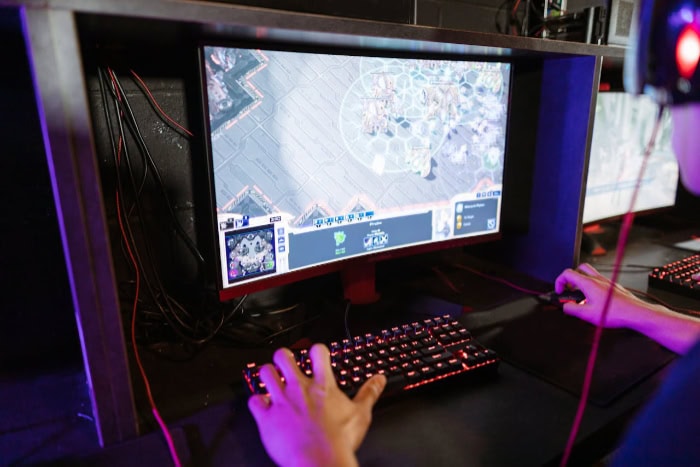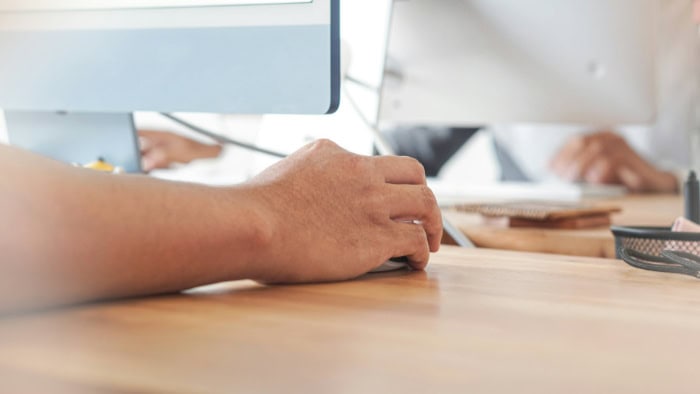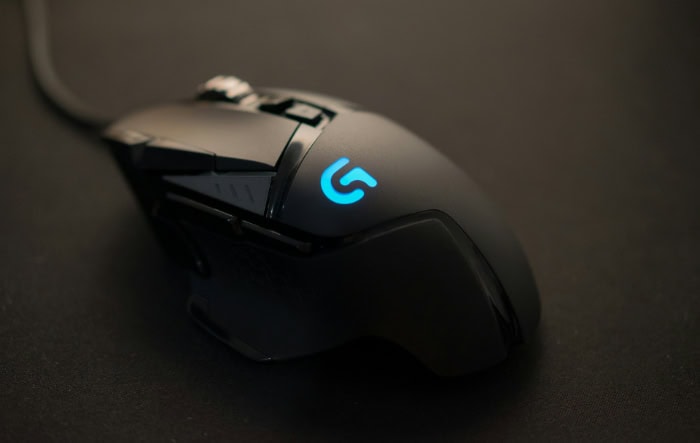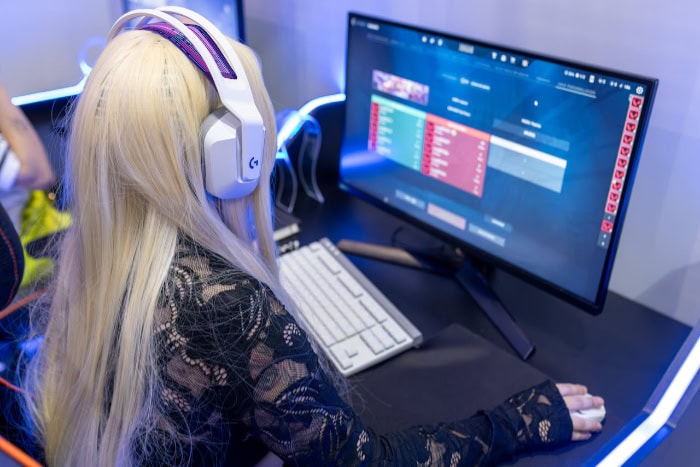Guide to Mouse Grip Styles: Improve Productivity and Play

The way you hold your mouse might not be something you think about often, but it has a profound impact on both your efficiency and comfort. Whether you're aiming for precision in a fast-paced game or spending hours on creative or office tasks, your grip style can influence everything from reaction speed to physical strain.
Choosing the right grip isn’t just about preference—it’s about finding the balance between performance and ergonomics.
Breaking Down Mouse Grip Styles
The way you grip your mouse significantly affects how you interact with your computer, influencing everything from comfort to precision. While preferences vary from person to person, there are three widely recognized grip styles: palm, claw, and fingertip.
Each grip style offers distinct advantages and is suited to specific tasks and hand mechanics.
Palm Grip
The palm grip is one of the most commonly used styles, offering a relaxed and natural way to hold the mouse. In this grip, the entire palm rests on the back of the mouse, while the fingers lie flat across the buttons.
This creates a large surface area of contact between your hand and the mouse, providing a stable and comfortable experience.
One of the defining features of the palm grip is its suitability for larger mice with high profiles. The raised back of the mouse supports the hand, allowing the wrist to remain in a neutral position.
This grip is particularly favored for tasks requiring steady, precise movements, as the entire arm is often engaged for control. However, because the palm grip involves less finger movement, it may feel slower or less agile when quick reactions are needed.
Claw Grip
The claw grip takes its name from the hand’s shape when using this style. In this position, the palm makes minimal contact with the back of the mouse, and the fingers arch upward, forming a claw-like structure.
The tips of the fingers rest on the buttons, while the thumb grips the side of the mouse for added control.
This grip style strikes a balance between speed and precision, making it popular among gamers and users who need a higher degree of agility. The claw grip allows for quicker clicks and more precise finger movements, as the hand is less anchored to the mouse.
It works well with medium-sized mice that have moderate arches, as these provide enough space for the hand to maintain its curved position. However, the arched finger placement can lead to fatigue during extended use, especially if the user frequently switches between tasks.
Fingertip Grip
The fingertip grip is the lightest and most agile of the three styles. In this grip, only the fingertips touch the mouse, with no contact between the palm and the device.
The fingers control the buttons and movement entirely, while the wrist and forearm provide additional support and control when needed.
This grip style is ideal for users who prioritize speed and responsiveness. It pairs well with smaller, lightweight mice that allow for quick, precise movements.
Because the hand makes minimal contact with the mouse, users can easily maneuver it across a wide range of motion, making fingertip grip a favorite among those working with high-DPI settings.
However, the lack of palm support can lead to reduced stability and increased strain on the fingers and wrist, particularly during prolonged use.
Benefits and Drawbacks of Each Grip Style

Each mouse grip style offers its own advantages and potential downsides, depending on how you use your computer and what you prioritize—be it comfort, speed, or precision.
Choosing the most suitable grip style involves weighing these pros and cons against your specific needs, such as long work hours, gaming performance, or overall hand health.
Palm Grip
The palm grip stands out for its comfort and support, making it a favorite for users who spend long hours on their computers. By allowing the entire palm to rest on the mouse, this grip provides a natural and relaxed position for the hand and wrist.
This makes it an excellent choice for reducing strain during extended use. Additionally, the palm grip offers stability, as the larger contact area between the hand and mouse enhances control over precise, slower movements.
This makes it particularly effective for tasks requiring accuracy, such as photo editing or methodical gaming styles.
However, the palm grip is not without its limitations. The relaxed posture and reliance on arm movement can make it less suited for activities requiring quick reaction times.
Users may find it harder to execute rapid, precise clicks or movements compared to other grip styles. This slower response time can be a disadvantage in fast-paced gaming scenarios, where speed often takes precedence over comfort.
Claw Grip
The claw grip strikes a balance between speed and precision, making it a popular choice for users who need agility without sacrificing too much control. By arching the fingers and minimizing palm contact, this grip allows for quicker and more precise finger movements.
This makes it particularly effective for tasks or games that require frequent clicking or fast cursor adjustments. Gamers often favor the claw grip for its ability to handle fast-paced, action-heavy scenarios, such as first-person shooters or competitive multiplayer games.
Despite its strengths, the claw grip does have some drawbacks. The arched position of the fingers can lead to fatigue over time, especially during prolonged use.
This grip also lacks the stability provided by the palm grip, as the reduced contact with the mouse can make it feel less anchored. As a result, it may require more effort to maintain control during slow, deliberate movements.
Fingertip Grip
The fingertip grip is all about speed and responsiveness. By relying solely on the fingertips to control the mouse, this grip enables quick, precise movements with minimal resistance.
It is especially well-suited for high-DPI settings, where even small hand movements translate to significant cursor adjustments on the screen.
This makes the fingertip grip a favorite for users who need fast reactions or who work across multiple monitors, as it allows for rapid navigation with ease.
However, the fingertip grip is not ideal for everyone. The lack of palm support can reduce overall control, making it harder to maintain accuracy during slower, more deliberate tasks.
This grip also places greater strain on the fingers and wrist, which can lead to discomfort or fatigue, particularly during extended use. Users who frequently rely on this grip may need to take extra care to avoid long-term strain or injury.
Choosing the Right Mouse for Your Grip Style

Selecting a mouse that complements your grip style is crucial for comfort, precision, and longevity during use. The design of the mouse—including its size, shape, weight, and button placement—can significantly enhance or hinder your experience.
Different grip styles require distinct features, and tailoring your choice to match your preferred technique can help you get the most out of your mouse.
Mouse Size and Shape
The size and shape of a mouse dictate how comfortably your hand fits and interacts with it. Each grip style benefits from a specific type of mouse design, which can influence how effectively you perform tasks or play games.
For users with a palm grip, a larger mouse with a high back is ideal. This design allows the entire palm to rest on the mouse comfortably, providing full support for the hand and wrist.
The raised back offers a natural resting position, reducing strain during extended use. A wider body also ensures that the hand feels secure and stable, making these mice a great fit for tasks requiring steady, controlled movements, such as graphic design or slower-paced gaming.
The claw grip, on the other hand, benefits from medium-sized mice with moderate arches. These mice provide enough surface area for partial palm contact while still allowing the fingers to maintain their arched position.
A slightly narrower body can improve the grip’s flexibility, enabling quicker and more precise movements.
The mouse should feel neither too bulky nor too small, as this balance is essential for maintaining control during fast-paced activities, such as competitive gaming.
For the fingertip grip, a small, lightweight mouse with a low profile works best. This design accommodates the minimal hand contact associated with this grip style, allowing the fingers to maneuver the mouse freely.
A lightweight mouse enhances agility, making it easier to execute rapid movements or adjust the cursor across large screen areas. Additionally, a compact shape ensures that the mouse does not feel cumbersome, enabling fingertip users to maintain their speed and responsiveness.
Weight and Button Placement
The weight and button layout of a mouse are equally important considerations when matching it to your grip style. These factors affect how effortlessly you can control the device and access its features during use.
Mouse weight is particularly significant, as it affects how quickly and accurately movements can be made. For palm grip users, a slightly heavier mouse is often preferred.
The added weight provides stability and reinforces the controlled, slower movements associated with this grip. However, lightweight models can still work well if comfort is prioritized over precision.
For claw grip users, a mid-weight mouse strikes the right balance. It should be light enough to support fast and agile movements but heavy enough to maintain a sense of control.
A mouse that is too light may feel difficult to stabilize, while one that is too heavy may hinder the speed that claw grip users often rely on.
Fingertip grip users typically benefit from ultra-lightweight mice. The reduced weight minimizes resistance, enabling the quick, precise flicks and adjustments that this grip style demands.
A heavier mouse could strain the fingers over time, as this grip relies on finger control rather than palm or arm support.
Button placement is another critical factor. For palm grip users, buttons should be widely spaced and easy to reach without requiring the fingers to lift or shift position.
This ensures comfort and accessibility during extended use. Claw grip users, who rely on arched fingers, benefit from buttons arranged closer together, allowing for rapid clicking without excessive movement.
Fingertip users require buttons that are highly accessible to the fingertips, as their grip style emphasizes dexterity and speed. A well-designed layout can improve efficiency and make the mouse feel like an extension of the hand.
Ergonomics and Health Considerations

Prolonged mouse usage can have a significant impact on hand health and overall comfort. Choosing the right grip style is only part of the equation—how you position your hand, maintain posture, and manage strain plays a crucial role in preventing discomfort and injuries.
Impact on Hand Health
Different grip styles place varying levels of stress on the muscles, tendons, and joints in your hand, wrist, and forearm. Over time, improper usage or prolonged strain can lead to common issues such as fatigue, discomfort, or repetitive stress injuries.
The palm grip is generally the most ergonomic, as it evenly distributes pressure across the hand and wrist. This reduces localized strain and makes it a comfortable choice for extended use.
However, the reliance on arm movement rather than finger dexterity may lead to shoulder or forearm fatigue, especially when using a heavier mouse.
For the claw grip, the arched position of the fingers increases the potential for strain in the hand and knuckles. While this grip allows for quick, precise actions, the constant tension in the fingers can lead to fatigue over time.
Additionally, the limited palm contact provides less support, increasing the likelihood of wrist discomfort during prolonged use.
The fingertip grip places the most stress on the fingers and wrist, as the hand relies entirely on the fingertips to control the mouse.
While this grip offers agility and speed, it can lead to overuse of the tendons in the fingers and increased wrist strain, particularly during extended sessions.
Users of this grip should be especially mindful of taking breaks and practicing proper posture to minimize risks.
Posture and Usage Tips
Maintaining proper posture while using a mouse is essential for reducing strain and preventing long-term discomfort. Regardless of your grip style, it’s important to position your hand, wrist, and arm in a way that minimizes tension and promotes natural movement.
Your wrist should remain in a neutral position, avoiding excessive bending or angling. Ideally, the wrist should be aligned with the forearm, allowing for a smooth and natural range of motion.
Resting your forearm on the desk can reduce the pressure on your wrist and improve stability, particularly for palm grip users.
For claw and fingertip grip users, it’s important not to grip the mouse too tightly. Excessive tension in the hand can lead to fatigue and may increase the risk of repetitive stress injuries.
Relaxing your fingers and using a light grip can help maintain comfort during extended use.
Taking regular breaks is just as important as proper posture. Extended mouse usage without breaks can lead to cumulative strain, regardless of how ergonomic your setup is.
Brief pauses every 20 to 30 minutes can give your muscles a chance to recover and reduce the risk of overuse injuries.
Preventing Long-Term Discomfort
Incorporating stretching and exercises into your routine can help alleviate tension and prevent long-term discomfort caused by prolonged computer use. These simple practices can improve circulation, relieve tightness, and strengthen the muscles used during mouse movements.
Stretching your fingers, hands, and wrists regularly can counteract the effects of repetitive movements. For example, gently bending your fingers backward and forward or rotating your wrists can help release tension.
Stretching the forearm by extending your arm and pulling your fingers back with your other hand is especially beneficial for palm and claw grip users.
Strengthening exercises can also provide long-term benefits by improving muscle endurance and reducing the likelihood of strain. Squeezing a stress ball or using hand grippers can build strength in the fingers and forearm.
For fingertip grip users, these exercises are particularly valuable, as they help counteract the high levels of strain placed on the fingers.
Matching Grip Styles to Activities

Different tasks and activities call for different levels of precision, speed, and comfort, making some mouse grip styles more suitable than others.
Whether you’re gaming, working on creative projects, or multitasking across multiple screens, aligning your grip style with the demands of the activity can enhance both performance and comfort.
Gaming Applications
Gaming often demands a combination of speed, accuracy, and stamina, which makes the choice of grip style crucial. Each grip offers unique advantages depending on the type of game being played.
For fast-paced first-person shooter (FPS) games, the claw and fingertip grips are often preferred. Both styles emphasize agility and allow for quick, precise movements, which are essential for aiming and reacting in real time.
The claw grip’s arched finger placement facilitates rapid clicking and fine control, while the fingertip grip’s light touch enables swift adjustments to the cursor or crosshair. These grips are particularly effective for gamers who play at high sensitivity settings and need to make split-second decisions.
On the other hand, palm grip users may find their style more suitable for games that require sustained comfort over long sessions, such as multiplayer online battle arena (MOBA) or real-time strategy (RTS) games.
These genres often involve managing multiple units or resources, where large, deliberate movements are more advantageous than rapid flicks. The support provided by the palm grip reduces fatigue, allowing players to maintain focus and control during extended gameplay.
Productivity Tasks
When it comes to productivity, the type of task often determines which grip style will feel most comfortable and effective. Creative professionals and office workers alike can benefit from choosing a grip that aligns with their workflow.
Photo editing and graphic design demand precision and stability, making the palm grip a natural choice.
The full-hand support provided by this grip allows for controlled, accurate movements, which are essential when working on intricate details or making pixel-perfect adjustments.
The arm’s involvement in guiding the mouse ensures smooth, deliberate strokes, which are particularly useful for tasks like drawing or retouching.
For general office tasks, such as document editing, spreadsheet work, or browsing, the choice of grip style largely depends on personal comfort.
Palm grip users may appreciate the relaxed posture it offers during long workdays, while claw or fingertip grip users might prefer the added agility for tasks requiring frequent clicking or navigation.
Versatility is key in this context, as different individuals may prioritize speed, precision, or comfort depending on their specific needs.
Multitasking or Multi-Monitor Setups
Multitasking and working across multiple monitors require frequent cursor movement and quick navigation. In these scenarios, the fingertip grip stands out as an excellent choice.
Its emphasis on speed and agility allows users to move the mouse effortlessly across large screen areas, making it easier to transition between applications or monitors.
The freedom of movement offered by the fingertip grip is particularly useful for professionals who rely on multi-monitor setups, such as programmers, data analysts, or video editors.
The lightweight feel and minimal hand contact reduce resistance, enabling swift adjustments without sacrificing accuracy. For those who need to cover significant screen real estate throughout the day, this grip style offers a practical and efficient solution.
Conclusion
The way you hold your mouse has a significant impact on comfort, performance, and long-term health. Palm, claw, and fingertip grips each bring their own advantages, making them better suited for different tasks, from gaming to productivity.
While the palm grip emphasizes comfort and stability, the claw grip balances speed and precision, and the fingertip grip offers unmatched agility for rapid movements.
Pairing the right mouse design with your preferred grip style can further enhance your experience, ensuring that size, shape, weight, and button placement complement your technique.
Alongside this, maintaining proper posture, taking regular breaks, and incorporating stretches or exercises can help mitigate strain and promote hand health over time.
Experimenting with these grip styles and ergonomic practices can help you find the combination that feels most natural and effective for your needs. A well-suited grip not only improves performance but also ensures that your time spent using a mouse remains comfortable and sustainable.


